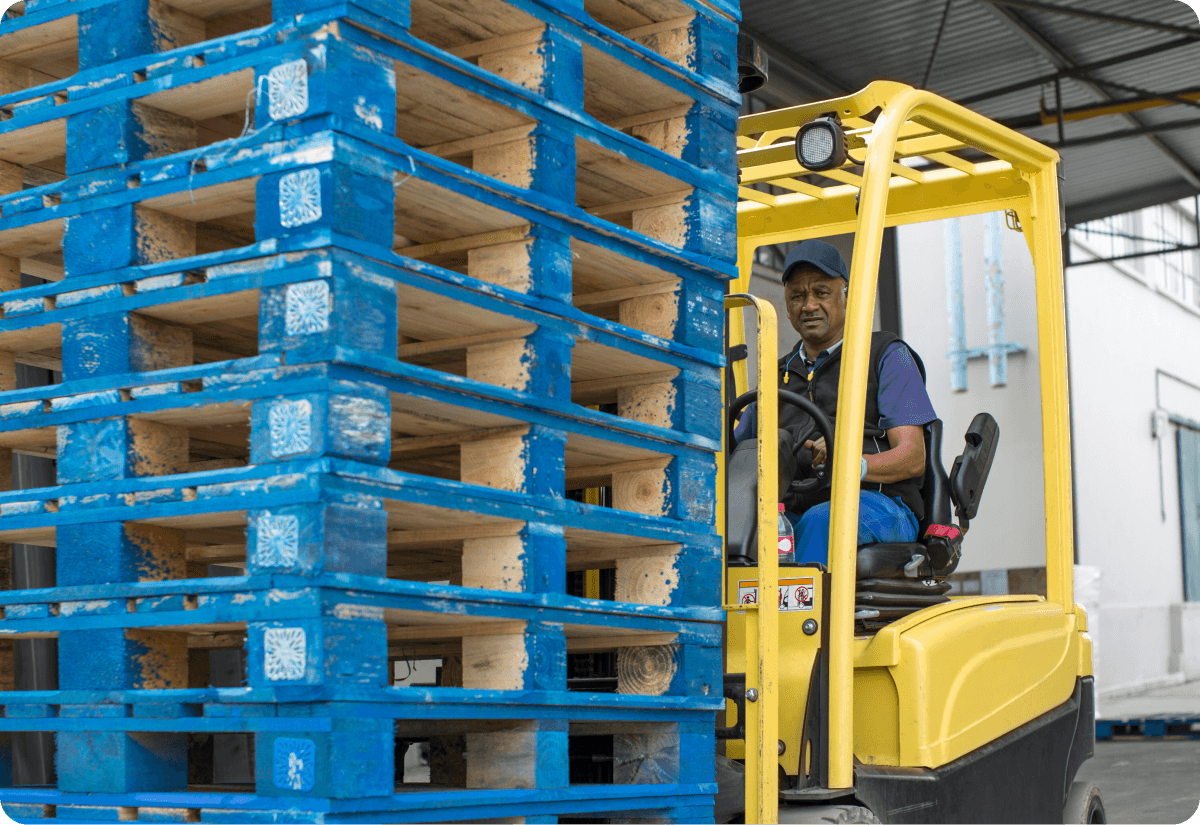Every day, companies distributing goods face tight deadlines, rising costs, and the pressure to serve both domestic and international markets. Even a single delivery mistake can be costly, as 16% of customers say they would stop shopping with a retailer after just one incorrect order.
A logistics hub puts freight dispatching, shipment consolidation, and a freight tracking system in one place. It keeps your goods moving smoothly, whether you ship locally or around the world. In this blog, we’ll explore how each element works and why a strong logistics hub is essential for your business success.
How a Centralized Logistics Hub Simplifies Operations
Centralizing logistics tasks in a single location—whether a distribution center or warehouse—removes extra steps and makes every process smoother. When you combine freight dispatching, shipment consolidation, and tracking in one hub, your team saves time and cuts errors. A unified setup also lets you react faster to changes in demand or traffic.
Here are the top five benefits of a logistics hub:
1. Unified Freight Dispatching at a Central Point
Positioning your hub near major highways and railroads enables quick sorting of cargo and reduces transit time. Integration with third-party logistics providers further extends your reach.
2. Streamlined Shipment Consolidation and Storage
Combining smaller loads into full truckloads unlocks volume discounts. On-site storage facilities let you stage shipments and minimize handling.
3. Real-Time Visibility with an Advanced Freight Tracking System
A unified dashboard delivers transparent insights into cargo movements. Live tracking controls the flow of goods across multiple regions.
4. Faster Issue Resolution for Logistics Operations
With dispatch logs, tracking updates, and consolidation reports in one system, teams identify and resolve bottlenecks in your busiest lanes.
Another hidden advantage of consolidation is the added security and risk reduction it provides.
How Shipment Consolidation Enhances Security and Reduces Risk
By reducing touchpoints, consolidation lowers the chances of cargo theft, misrouting, and product damage.
- Fewer Handoffs: Less handling means fewer chances for error.
- Better Monitoring: Larger, consolidated shipments are tracked closely in one system.
- Simplified Insurance: Consolidated loads streamline claims and coverage.
Security benefits give businesses confidence that savings from combined freight discounts won’t come at the expense of safety.
5. Simplified Data Sharing and Supply Chain Partnerships
Consistent reports reduce back-and-forth emails. Sharing transportation and warehousing data builds strong supply chain partnerships.
Combining these improvements makes your logistics hub the busiest gateway for the efficient distribution of goods. It acts as the central hub that ensures every shipment moves smoothly and on time.
Making Freight Dispatching More Accurate and Timely
Making freight dispatching more accurate and timely means optimizing every stage—from planning pickups to monitoring deliveries—to cut delays and reduce costs. Efficient dispatch not only keeps your schedule on track but also boosts customer satisfaction and cuts extra expenses.
This section describes five clear steps you can take to streamline your dispatch workflow and keep shipments on schedule.
Step 1: Centralize Your Schedule
Use the hub’s freight dispatching tool to map every pickup and drop-off in one calendar. This prevents double-booking and missed slots.
Step 2: Automate Reminders
Set alerts for drivers and dispatchers on both national and international routes. Automated notifications reduce human error.
Step 3: Monitor in Real Time
Leverage your shipment tracking system to watch cargo as it moves along highways and railroads. Real-time data lets you adjust routes instantly.
Step 4: Share Data Seamlessly
Publish dispatch logs directly to carriers, third-party logistics partners, and e-commerce clients. Transparent sharing strengthens relationships, supports distribution needs, and builds supply chain partnerships.
Step 5: Review and Improve
Analyze dispatch reports regularly to spot recurring issues. Use insights to refine routes, enhance site selection, and boost on-time performance for goods nationwide.
These steps make your dispatch process smooth and data-driven. You’ll see live performance stats, spot delays early, and improve your workflow for faster, more reliable deliveries. You’ll also cut costs and build customer trust by consistently delivering on time.
Once freight dispatching is centralized, routing becomes the next major factor in ensuring consolidated shipments remain efficient.
How Routing and Planning Algorithms Optimize Consolidated Shipments
Routing and planning algorithms prevent delays by mapping the best path for consolidated loads. They balance cost savings from combined freight discounts with speed and reliability.
- Load-to-Route Matching: Ensures shipments are grouped logically into full truckloads.
- Dynamic Adjustments: Real-time updates handle delays from traffic or weather.
- Capacity Optimization: Maximizes vehicle use, reducing empty space and cost per mile.
When dispatching and routing work together, businesses move freight faster, cheaper, and more predictably.
Using Shipment Consolidation to Cut Down on Costs
A strong logistics hub specializes in shipment consolidation to lower transport fees and improve efficiency. Shipment consolidation ensures you benefit from bulk rates and reduced handling, creating consistent savings. You can also find freight solutions tailored to your needs through the hub’s analytics.
Below are the key consolidation strategies that drive cost savings and streamline your operations:
- Gather Orders: Collect incoming e-commerce and B2B orders, keeping your freight tracking system accurate and up to date.
- Group Shipments: Merge smaller loads into full truckloads through strategic shipment consolidation, unlocking volume discounts and reducing per-unit costs.
- Select Carrier: Compare quotes from multiple carriers, including third-party logistics providers, to choose the best combination of cost and reliability.
- Load Planning: Organize goods in storage facilities to maximize space. Efficient packing reduces empty space and cuts waste.
- Dispatch: Execute a streamlined freight dispatching process that replaces multiple smaller shipments, saving time and handling costs.
By consolidating shipments into full loads, your logistics hub cuts transport rates and cuts down on handling steps. This strategy delivers steady cost savings and makes your shipping expenses easy to budget.
Beyond unlocking combined freight discounts and lowering handling costs, shipment consolidation delivers even more value when measured with clear KPIs.
Key Performance Indicators for Measuring Consolidation Success
Measuring success requires more than reviewing invoices. Businesses should use performance metrics that prove whether consolidation is working.
- Cost per Shipment: Tracking savings highlights the impact of combined freight discounts.
- Load Factor: Ensures trucks are filled efficiently, reducing empty miles.
- On-Time Delivery Rate: Shows if consolidation improves service levels, not just costs.
- Damage or Loss Incidents: Fewer touchpoints should reduce product risk.
- Carrier Utilization: Evaluates how well partners are leveraged across multiple lanes.
These KPIs create a clear picture of performance, helping you refine consolidation strategies for better long-term gains.
How a Logistics Hub Powers an Effective Freight Tracking System
A strong logistics hub boosts your freight tracking system by bringing together data from trucks, trains, and storage in one place. This clear view helps you spot delays quickly, send instant alerts if a shipment goes off course, and look back at past trends to plan better. Your team can see where each delivery is right now, fix issues fast, and work smoothly with drivers and partners:
The table below outlines the main benefits and potential drawbacks of using a logistics hub for your freight tracking system.
| Pros | Cons |
| Better visibility across transportation and warehousing | Initial setup cost for a logistics hub |
| Fewer lost shipments and damaged cargo | Training needed for staff |
| Centralized data from highways, railroads, and warehouses | Ongoing system maintenance |
Beyond these benefits, proactive alerts help your team optimize site selection, create jobs, and expand distribution and fulfillment centers. With integrated tracking and full transparency, your hub becomes the valuable center of your supply chain management.
Beyond monitoring shipments in real time, data analysis helps logistics teams predict and improve how consolidation delivers value.
How Data Analysis Powers Efficient Shipment Consolidation
Strong analytics uncover opportunities that make consolidation more efficient and reliable. By leveraging data, logistics teams can plan shipments in advance, secure combined freight discounts, optimize costs, and respond quickly to disruptions—rather than waiting for problems to appear.
Key ways data analysis strengthens consolidation include:
- Spotting Order Trends: Identifies patterns that support grouping shipments for combined freight discounts.
- Evaluating Lane Performance: Reveals which routes benefit most from consolidation.
- Forecasting Demand: Predictive models help plan full truckloads before orders spike.
- Adapting in Real Time: Exception alerts let teams adjust consolidations instantly when schedules or volumes change.
By leaning on analytics, consolidation becomes proactive and scalable, ensuring that combined freight discounts, cost savings, and performance improvements work hand in hand.
Once tracking is optimized, the next challenge is ensuring delivery and distribution are carried out efficiently.
Efficient Delivery and Distribution
Shipment consolidation doesn’t stop at the warehouse—it also shapes how goods are delivered and distributed to customers, unlocking combined freight discounts along the way.
- Zone Skipping: Consolidated freight bypasses sorting centers to reduce transit time.
- Cross-Docking: Transfers consolidated loads quickly for last-mile delivery.
- Lower Cost Per Mile: Combined freight discounts make every mile traveled more profitable.
Efficient delivery ensures consolidation strengthens both supply chain operations and customer satisfaction.
For companies shipping internationally, consolidation also simplifies compliance and speeds up customs clearance.
Streamlined Compliance and Documentation for Hassle-Free Customs Clearance
International trade often slows down due to paperwork. Shipment consolidation makes this process simpler and more reliable.
- Unified Documentation: One consolidated load means fewer customs forms.
- Reduced Errors: Centralized filing lowers mistakes in tariff codes.
- Faster Clearance: Combined freight discounts are matched by quicker border processing.
- Consistent Records: Partners share one set of compliance documents.
By streamlining customs, businesses reduce risk and keep global deliveries on schedule.
Transform Your Supply Chain Today
We understand how overwhelming it can feel to juggle freight dispatching, shipment consolidation, and tracking across different platforms.
That’s why Supply Chain Solutions partners with you to design and build a logistics hub that fits your exact needs.
From site selection and system configuration to hands-on training and ongoing support, we make sure your team can use the hub confidently and effectively. You’ll gain real-time visibility, faster turnaround times, and reduced errors—all while cutting costs and unlocking new growth opportunities.

